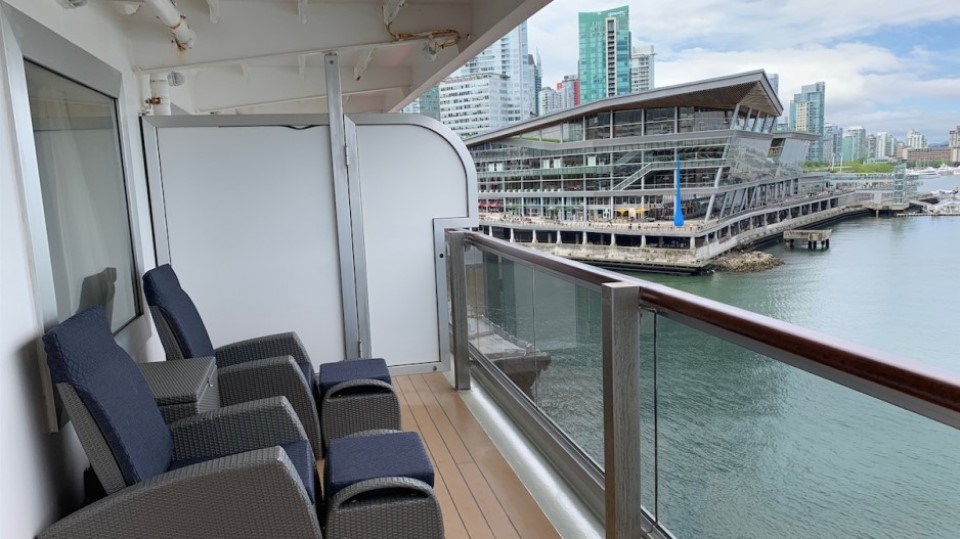Cruise passengers who do not own smartphones may find the process for boarding ships in Â鶹´«Ã½Ó³»more of a challenge than tech-savvy peers.
The problem for those cruise passengers who live outside Canada is that they need to upload some information to the Canadian government's ArriveCan app after arriving in Vancouver, instead of being able to do that on their desktop computers at their homes.
The ArriveCan app is needed in order to prove that travellers have been vaccinated, which is a requirement to enter Canada. It is also needed to prove that status in order to board a cruise ship.
Travellers can enter vaccination information, and arrival data via the ArriveCan website. The website and app only allow once entrance to be input at any given time.
This means that a person who lives in Phoenix, Arizona, for example, must enter the data before flying to Vancouver, and then again after arrival in Â鶹´«Ã½Ó³»in order to board a cruise ship.
Cruise Lines International Association - North West & Canada (CLIA) spokesman Barry Penner told BIV that it would be "less stress" for people who do not have smartphones if they could input all needed information for their full trips into the app before they leave their homes.
Enabling passengers to prove vaccination status using paper documents would be one way that this stress could be relieved.
Carnival Cruise Line and Royal Caribbean Cruises told BIV in emails that they accept paper proof that passengers have tested negative within the required time periods.
Canada requires all cruise passengers to show proof of a negative antigen test taken within one calendar day of travel, or a negative PCR test taken within 72 hours of the departure time.
Ottawa removed COVID-19 testing requirements in order to enter the country, but the requirement to show proof of a negative COVID-19 test remains in effect for those who want to leave the country via cruise ship.
Louise Tremblay, executive director at the Brella Community Services Society, told BIV that she believes the federal government should address challenges with the ArriveCan app. Her Surrey-based society supports seniors with services to make them more educated and engaged.
"Definitely the app should be as user-friendly as possible," she said.
Canadian senior Thomas Crawford, 77, told BIV that he would prefer filling out paper forms to fiddling with the ArriveCan app.
"I'd be lost without family members helping," he said. "The whole thing took hours and hours. I was running out of time and worried I wouldn't finish before I left."
Making the ArriveCan app more user-friendly, and capable of accepting multiple itineraries could encourage more foreigners to take cruises that set sail from within Canada.
The Â鶹´«Ã½Ó³»Fraser Port Authority estimated pre-pandemic that each cruise ship call in Â鶹´«Ã½Ó³»generated about $3 million in economic activity.
BIV asked federal Tourism Minister Randy Boissonnault why his government's app is not designed to accept proof of negative COVID-19 tests when visitors are in their home countries, and he said that the app is "the best tool we were able to design during the time that we had."
He said that he has raised with cabinet colleagues the issue that the ArriveCan app can be a challenge for people without smartphones.
"I had raised this with [Public Safety] Minister Marco Mendicino, and if there's ever any other way that we can make this kind of proof of vaccination or proof of status available, we'll certainly look into that, but ArriveCan is the is the tool that we have now."
Mendicino's staff steered BIV to the Canada Border Services Agency, where spokeswoman Rebecca Purdy confirmed that the ArriveCan app is not able to accept multiple itineraries.
Vancouver's cruise season is set to get underway on April 10, when Holland America’s MS Koningsdam arrives at Canada Place.
It , but the Princess Cruises ship, the Caribbean Princess, had an outbreak of COVID-19 and required some repairs. That sidelined the vessel for what operators called "extensive dry dock."



